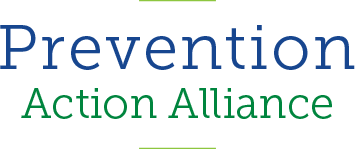
 As we all adjust to a new normal and cope with the full impacts of COVID-19 we want to remind parents and preventionists across Ohio that we have tools, research, and expertise to support Ohioans of all ages. Prevention Action Alliance wants to share these practical tips that you can use immediately to support a happy, healthy, safe, and drug-free family, home, and community. We’re helping youth emerge happy, healthy, and resilient because everyone has a role in prevention.
As we all adjust to a new normal and cope with the full impacts of COVID-19 we want to remind parents and preventionists across Ohio that we have tools, research, and expertise to support Ohioans of all ages. Prevention Action Alliance wants to share these practical tips that you can use immediately to support a happy, healthy, safe, and drug-free family, home, and community. We’re helping youth emerge happy, healthy, and resilient because everyone has a role in prevention.
These practical principles are based on the Developmental Asset Framework established by Search Institute. Many factors influence the development and well-being of young people. Young people who have support from their family and community and who hold positive values and good self-esteem are more likely to succeed and make healthy choices. This is true even when traumatic events affect them.
The Search Institute cataloged 40 Developmental Assets that reflect these factors. Half of the assets are external while the other half are internal. The external assets are further grouped into support, empowerment, boundaries and expectations, and constructive use of time. The internal assets include a commitment to learning, positive values, social competencies, and positive identity and are listed below.
External Assets
Support
 When family members share their hopes, beliefs, and dreams for the future, love and support are then naturally woven in the tapestry of the family unit. Open communication, healthy relationships, and a caring environment promote appreciation, acceptance, and affection.
When family members share their hopes, beliefs, and dreams for the future, love and support are then naturally woven in the tapestry of the family unit. Open communication, healthy relationships, and a caring environment promote appreciation, acceptance, and affection.
- Family support
- Positive family communication
- Other adult relationships
- Caring neighborhood
- Caring school climate
- Parent involvement in schooling
Empowerment
 When a young person feels safe, protected, and respected he/she/they will be empowered to better serve their community, engage other community leaders, and promote health, wellness, safety, and security in their families and throughout the community.
When a young person feels safe, protected, and respected he/she/they will be empowered to better serve their community, engage other community leaders, and promote health, wellness, safety, and security in their families and throughout the community.
Boundaries and Expectations
 When clear expectations are in place and when boundaries are consistent, young people are more apt to follow rules, maintain standards, and are encouraged to do their best in school, at home, and in their communities.
When clear expectations are in place and when boundaries are consistent, young people are more apt to follow rules, maintain standards, and are encouraged to do their best in school, at home, and in their communities.
- Family boundaries
- School boundaries
- Neighborhood boundaries
- Adult role models
- Positive peer influence
- High expectations
Constructive Use of Time
 Spending time exploring interests, perfecting skills or sharing faith, friends, and fun helps all young people to grow and develop into productive and happy adults.
Spending time exploring interests, perfecting skills or sharing faith, friends, and fun helps all young people to grow and develop into productive and happy adults.
Internal Assets
Commitment to Learning
 Children, youth, and young people value learning. They feel good about who they are and what they can do.
Children, youth, and young people value learning. They feel good about who they are and what they can do.
Positive Values
 Young people cultivate rooted principles that promote healthy life choices.
Young people cultivate rooted principles that promote healthy life choices.
Social Competencies
 Children, youth, and young people build practices toward healthy behaviors, decisions, and coping methods when faced with new or difficult situations.
Children, youth, and young people build practices toward healthy behaviors, decisions, and coping methods when faced with new or difficult situations.
- Planning and decision-making
- Interpersonal competence
- Cultural competence
- Resistance skills
- Peaceful conflict resolution
Positive Identity
 Strong self-worth, self-esteem, and self-image are paramount to a young person’s development.
Strong self-worth, self-esteem, and self-image are paramount to a young person’s development.
About the 40 Developmental Assets
Building upon the 40 Developmental Assets can help youth succeed at their goals, become resilient, and enjoy better health outcomes. Learn more about the 40 Developmental Assets at our website and share them with others you know. Everyone has a role in prevention. Building youths’ assets can be your role. The 40 Developmental Assets® may be reproduced for educational, non-commercial uses only. Copyright ©1997 Search Institute®, 3001 Broadway Street NE, Suite 310, Minneapolis MN 55413; 800-888-7828; www.searchinstitute.org. All rights reserved.
